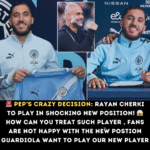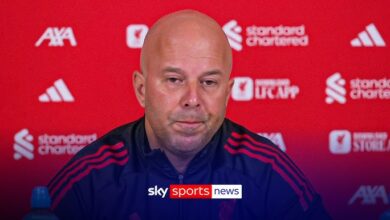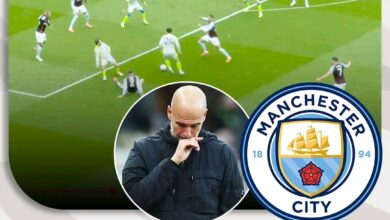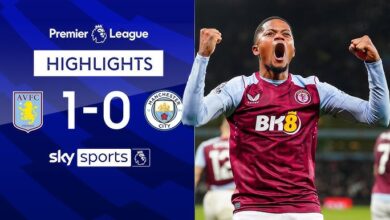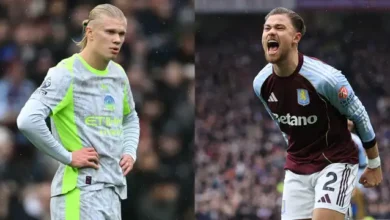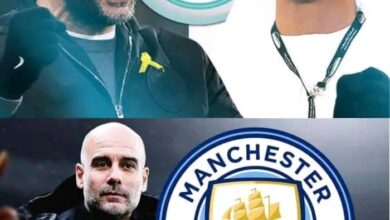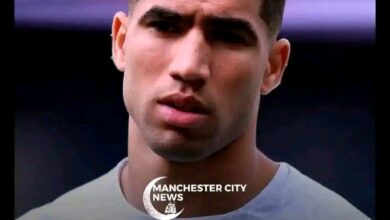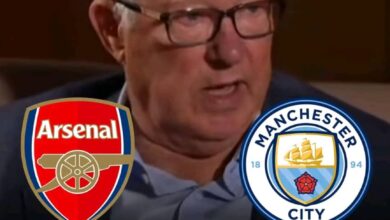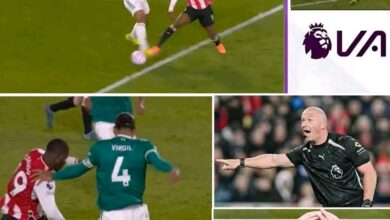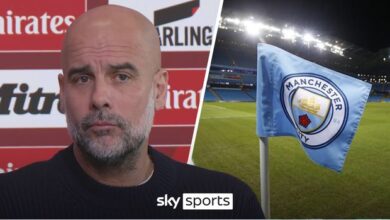Fabrizio Romano shares what’s next for Man City once Rayan Cherki deal is complete

The 2024/25 football season marked a watershed moment in Manchester City’s recent history, representing both the conclusion of an unprecedented period of dominance and the beginning of what promises to be a comprehensive rebuilding project under Pep Guardiola’s continued stewardship. For a club that had grown accustomed to lifting trophies with almost mechanical regularity, the campaign that has just concluded served as a stark reminder that even the most successful footballing machines require periodic overhauls to maintain their competitive edge.
Manchester City’s transformation from serial winners to a team scrambling for Champions League qualification in the final weeks of the season has provided the catalyst for what appears to be the most significant transfer activity the club has undertaken in recent memory. The psychological impact of going an entire campaign without silverware, after four consecutive Premier League titles, cannot be understated in understanding the urgency with which the club is approaching the current transfer window.
The Context of City’s Challenging Season
To fully appreciate the magnitude of Manchester City’s current transfer activity, it’s essential to understand the depth of their struggles during the 2024/25 campaign. The club that had become synonymous with consistent excellence found itself in unfamiliar territory, experiencing the kind of season that forces fundamental questions about squad composition, tactical approach, and long-term strategic planning.
The absence of any trophy from City’s cabinet at the end of the season represented more than just a statistical anomaly; it highlighted systemic issues that had been masked by previous successes. The team’s inability to maintain their characteristic dominance across multiple competitions exposed vulnerabilities in squad depth, tactical flexibility, and perhaps most critically, the aging profiles of several key players who had been instrumental in the club’s golden period.
The pressure of securing Champions League football, which should have been a formality for a club of City’s stature, extending into the final weekend of the season, served as a particularly stark illustration of how dramatically circumstances had changed. This scenario forced the club’s hierarchy to confront the reality that immediate and substantial changes were necessary to restore the team to its former glory.
The Architectural Vision Behind City’s Rebuild
Pep Guardiola’s approach to the current rebuilding process reflects both his tactical evolution and his understanding of the modern game’s demands. The Spanish manager, who has consistently demonstrated his ability to adapt his philosophy to different squads and circumstances, appears to be orchestrating a reconstruction that addresses multiple areas of concern simultaneously.
The transfer strategy being implemented suggests a move toward a more balanced squad composition, one that combines the technical excellence and tactical sophistication that have become hallmarks of Guardiola’s teams with the physical attributes and mental resilience necessary to compete across multiple demanding competitions. This holistic approach to squad building represents a mature response to the lessons learned from the disappointing campaign.
Central to this rebuilding project is the recognition that successful teams require not just individual talent, but players who can adapt to multiple roles and tactical systems. The targets being pursued by City reflect this philosophy, with each potential signing offering versatility and the ability to contribute in various tactical configurations.
Tijjani Reijnders: The Foundation of the New Midfield
The imminent arrival of AC Milan’s Tijjani Reijnders represents perhaps the most significant statement of intent in Manchester City’s rebuilding project. The Dutch midfielder, whose medical is scheduled for Sunday morning, brings a combination of technical ability, tactical intelligence, and physical presence that perfectly aligns with Guardiola’s vision for the team’s future.
Reijnders’ development at AC Milan has been nothing short of remarkable, establishing himself as one of Serie A’s most promising midfield talents. His ability to operate effectively in multiple midfield roles makes him an ideal fit for Guardiola’s tactical system, which often requires players to adapt their positioning and responsibilities based on the phase of play and the specific demands of each match.
The financial commitment involved in securing Reijnders’ services, reportedly around £48 million, demonstrates City’s willingness to invest significantly in players who represent the future of the squad. This investment philosophy suggests that the club is not merely looking for short-term fixes but is committed to building a foundation that can sustain success over multiple seasons.
The Dutch international’s playing style, characterized by his exceptional passing range, defensive work rate, and ability to contribute in attacking phases, makes him an ideal bridge between City’s past and future. His presence should provide the kind of midfield stability that was often lacking during the challenging 2024/25 season, while his technical ability ensures that the team’s commitment to attractive, possession-based football remains unchanged.
Rayan Ait-Nouri: Addressing the Left-Back Conundrum
The acquisition of Wolves’ Rayan Ait-Nouri addresses one of the most pressing positional needs in Manchester City’s squad. The Algerian left-back’s pace, attacking threat, and defensive reliability make him an ideal fit for Guardiola’s tactical system, which places enormous demands on full-backs to contribute in both defensive and offensive phases.
Ait-Nouri’s performances for Wolves have consistently demonstrated his ability to operate effectively in the Premier League’s demanding environment. His experience in English football eliminates the adaptation period that often accompanies international transfers, allowing him to make an immediate impact at the Etihad Stadium.
The player’s attacking contributions, evidenced by his goal-scoring record and assist statistics, align perfectly with Guardiola’s tactical philosophy, which often sees full-backs operating as auxiliary wingers in possession. This tactical flexibility has been a crucial component of City’s most successful periods, and Ait-Nouri’s skill set suggests he can fulfill this role effectively.
Moreover, his defensive reliability provides the kind of foundation that allows other players to express themselves offensively without compromising the team’s structural integrity. This balance between attacking ambition and defensive solidity has been a recurring theme in Guardiola’s most successful teams, and Ait-Nouri’s profile suggests he can contribute to both aspects of the game.
Rayan Cherki: The Creative Catalyst
Perhaps no potential signing has generated more excitement among Manchester City supporters than the anticipated arrival of Lyon’s Rayan Cherki. The French midfielder’s technical ability, creativity, and potential for development make him one of the most coveted young talents in European football.
Cherki’s recent performances for the French national team, particularly his impressive display in the 5-4 loss to Spain, have only reinforced the widespread belief that he represents one of the most promising prospects in world football. His ability to create chances, score goals, and influence games from various positions makes him an ideal addition to Guardiola’s tactical arsenal.
The young Frenchman’s versatility allows him to operate effectively across multiple attacking positions, providing Guardiola with the kind of tactical flexibility that has been instrumental in the manager’s most successful periods. Whether deployed as a traditional number 10, a wide playmaker, or even in deeper midfield roles, Cherki possesses the technical ability and tactical intelligence to excel.
High-profile endorsements from established stars like Paul Pogba and Kylian Mbappe only serve to underline Cherki’s exceptional potential. Pogba’s description of him as a “phenomenon” carries particular weight given the former Manchester United midfielder’s experience at the highest level of the game. Similarly, Mbappe’s public support for his compatriot reflects the respect Cherki commands among France’s established international stars.
The completion of Cherki’s transfer represents more than just the acquisition of a talented player; it signals Manchester City’s commitment to combining immediate impact with long-term potential. At just 21 years of age, Cherki has the time to develop into one of the world’s premier attacking midfielders under Guardiola’s guidance.
The Right-Back Dilemma: Addressing a Critical Weakness
According to transfer expert Fabrizio Romano, once the three priority signings are completed, Manchester City’s attention will turn to addressing the right-back position. This focus reflects one of the most significant challenges facing the club as they prepare for the upcoming season.
The anticipated departure of Kyle Walker represents the end of an era for Manchester City. The English defender’s eight-year tenure at the club has been marked by consistent excellence, with his pace, crossing ability, and defensive reliability making him an integral part of the team’s most successful period. Finding an adequate replacement for such an influential player presents a significant challenge for the club’s recruitment team.
The search for Walker’s successor has reportedly encountered several obstacles, with Newcastle United’s reluctance to sell Tino Livramento and the complex negotiations surrounding Juventus’ Andrea Cambiaso highlighting the difficulty of securing top-quality full-backs in the current market. These challenges reflect the premium placed on players who can excel in the demanding role of a modern full-back.
Livramento’s profile as a young, pacey defender with significant Premier League experience makes him an attractive target, but Newcastle’s unwillingness to negotiate creates a significant barrier. Similarly, Cambiaso’s versatility and proven ability in Serie A make him an appealing option, but Juventus’ valuation and the player’s own preferences complicate any potential deal.
The consideration of Flamengo’s Wesley demonstrates City’s willingness to explore global markets in their search for solutions. However, the apparent doubts surrounding this potential signing suggest that the club’s recruitment team maintains high standards regardless of a player’s origin or reputation.
Tactical Implications and Strategic Planning
Guardiola’s plan to utilize Matheus Nunes at right-back for the FIFA Club World Cup represents an interesting tactical experiment that could provide insights into the manager’s thinking about positional flexibility. Nunes’ technical ability and pace make him a viable option for this role, even if it represents a departure from his natural midfield position.
This tactical adaptation reflects Guardiola’s pragmatic approach to squad management and his willingness to maximize the utility of available players. The success or failure of this experiment could influence the club’s approach to the right-back position in the longer term, potentially affecting their transfer priorities and tactical evolution.
The temporary nature of this solution, however, underscores the importance of securing a long-term replacement for Walker. The demands of a full Premier League season, combined with Champions League and domestic cup commitments, require specialist players in each position, making the acquisition of a natural right-back a priority.
Goalkeeping Considerations and Squad Depth
Romano’s suggestion that Manchester City might also pursue a goalkeeper after the Club World Cup highlights another area of potential uncertainty. The situation surrounding Ederson, City’s current number one, remains unclear, creating potential complications for the club’s planning.
Ederson’s importance to City’s tactical system extends far beyond traditional goalkeeping duties. His ability to play out from the back and launch attacks with his exceptional passing range has been integral to Guardiola’s tactical approach. Any potential replacement would need to possess similar technical abilities to maintain the team’s playing style.
The uncertainty surrounding Ederson’s future reflects the complex nature of modern squad management, where even seemingly settled players can become transfer targets or seek new challenges. This situation requires careful planning and potentially proactive recruitment to avoid being caught unprepared.
Financial Considerations and Market Dynamics
The scale of Manchester City’s transfer activity reflects significant financial investment, with the combined cost of their priority targets likely to exceed £130 million. This level of expenditure demonstrates the club’s commitment to returning to the summit of English and European football.
The decision to prioritize specific positions and player profiles over marquee signings like Morgan Gibbs-White or Florian Wirtz suggests a more strategic approach to recruitment. Rather than pursuing expensive established stars, City appears to be focusing on players who offer the best combination of current ability and future potential.
This approach reflects lessons learned from previous transfer windows and a more nuanced understanding of squad building in the modern era. The emphasis on versatile, technically gifted players who can adapt to multiple roles provides greater tactical flexibility while potentially offering better value for money.
The Broader Context of Premier League Competition
Manchester City’s rebuilding project is taking place against the backdrop of increased competition within the Premier League. The continued strength of rivals like Arsenal, Liverpool, and the potential resurgence of other traditional powers means that any period of weakness risks being exploited by competitors.
The urgency with which City is approaching the transfer market reflects an understanding that in modern football, even brief periods of decline can have lasting consequences. The club’s hierarchy appears determined to ensure that the disappointing 2024/25 season represents an aberration rather than the beginning of a longer period of struggle.
The quality of players being targeted suggests confidence that the fundamental structures and philosophies that brought previous success remain sound. Rather than wholesale changes to the club’s approach, the current activity appears designed to refresh and strengthen the existing framework.
Conclusion: Building for the Future
Manchester City’s comprehensive approach to the summer transfer window represents more than just a response to a disappointing season; it reflects a strategic vision for sustained success in an increasingly competitive environment. The combination of immediate reinforcement and long-term planning evident in their transfer activity suggests a club that has learned from recent setbacks while maintaining confidence in its fundamental approach.
The successful completion of the Reijnders, Ait-Nouri, and Cherki transfers would provide Guardiola with a significantly strengthened squad, addressing key areas of weakness while adding the kind of technical quality and tactical flexibility that has characterized City’s most successful periods. The subsequent pursuit of a right-back and potential goalkeeper would complete a transformation that could restore the club to its position at the summit of English football.
The challenges ahead remain significant, with established rivals showing no signs of weakening and new competitors emerging regularly. However, the scale and quality of City’s transfer activity suggest a club that is both aware of these challenges and confident in its ability to meet them.
As the new season approaches, Manchester City’s supporters have every reason to be optimistic about their team’s prospects. The combination of Guardiola’s tactical acumen, the club’s financial resources, and the quality of players being recruited provides a foundation for success that should serve the club well in the years to come.
The rebuilding project represents not just an attempt to reclaim past glories, but an opportunity to establish new standards of excellence that could define the next chapter in Manchester City’s remarkable modern history. The success of this ambitious undertaking will ultimately be measured not just in trophies won, but in the sustainability of the success it aims to create.


